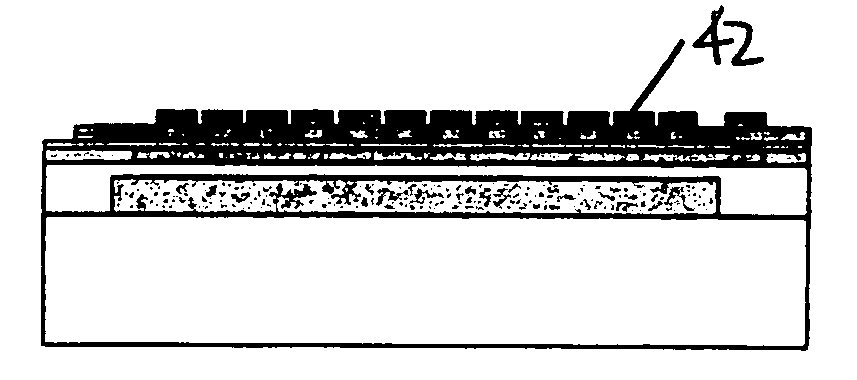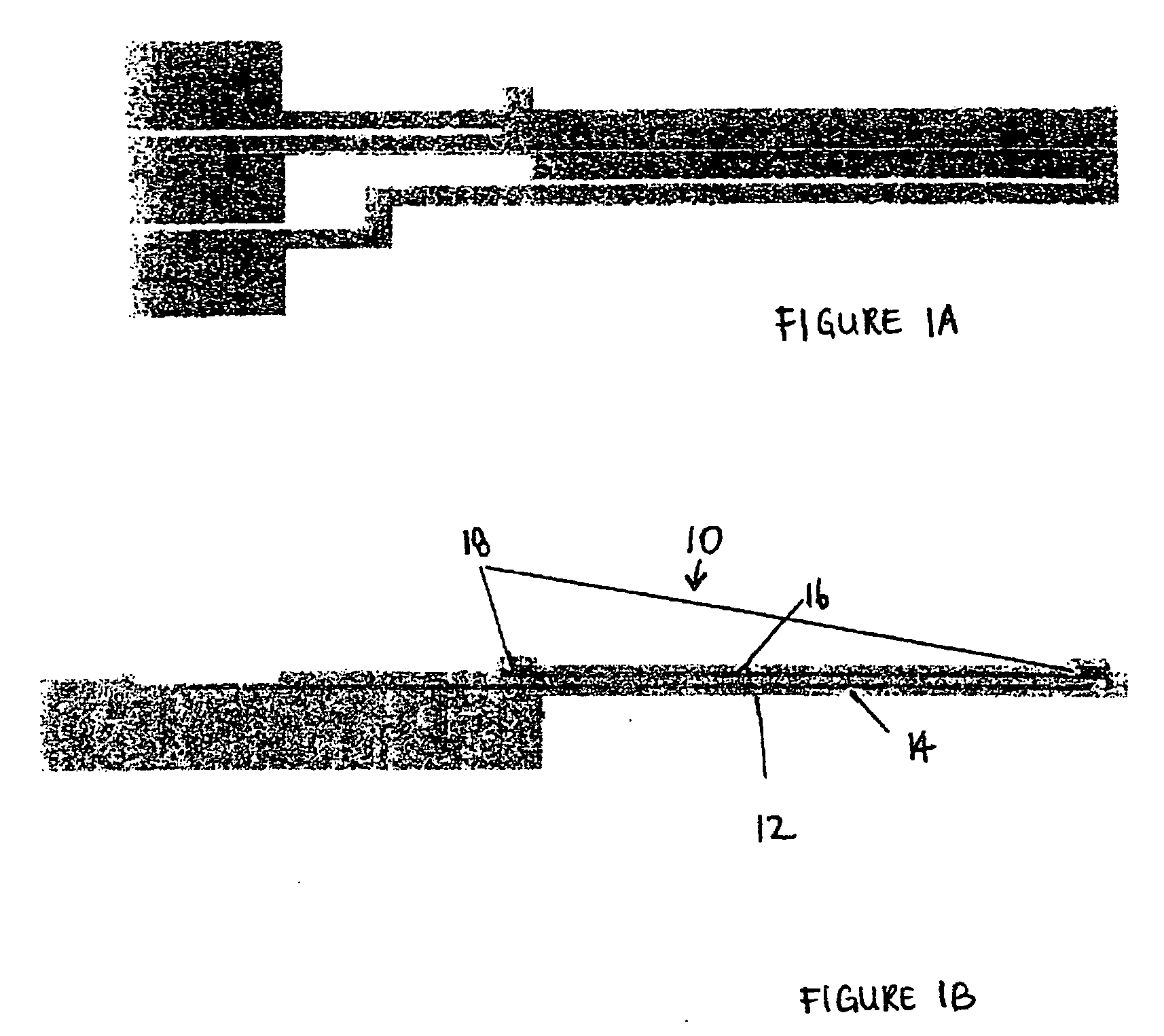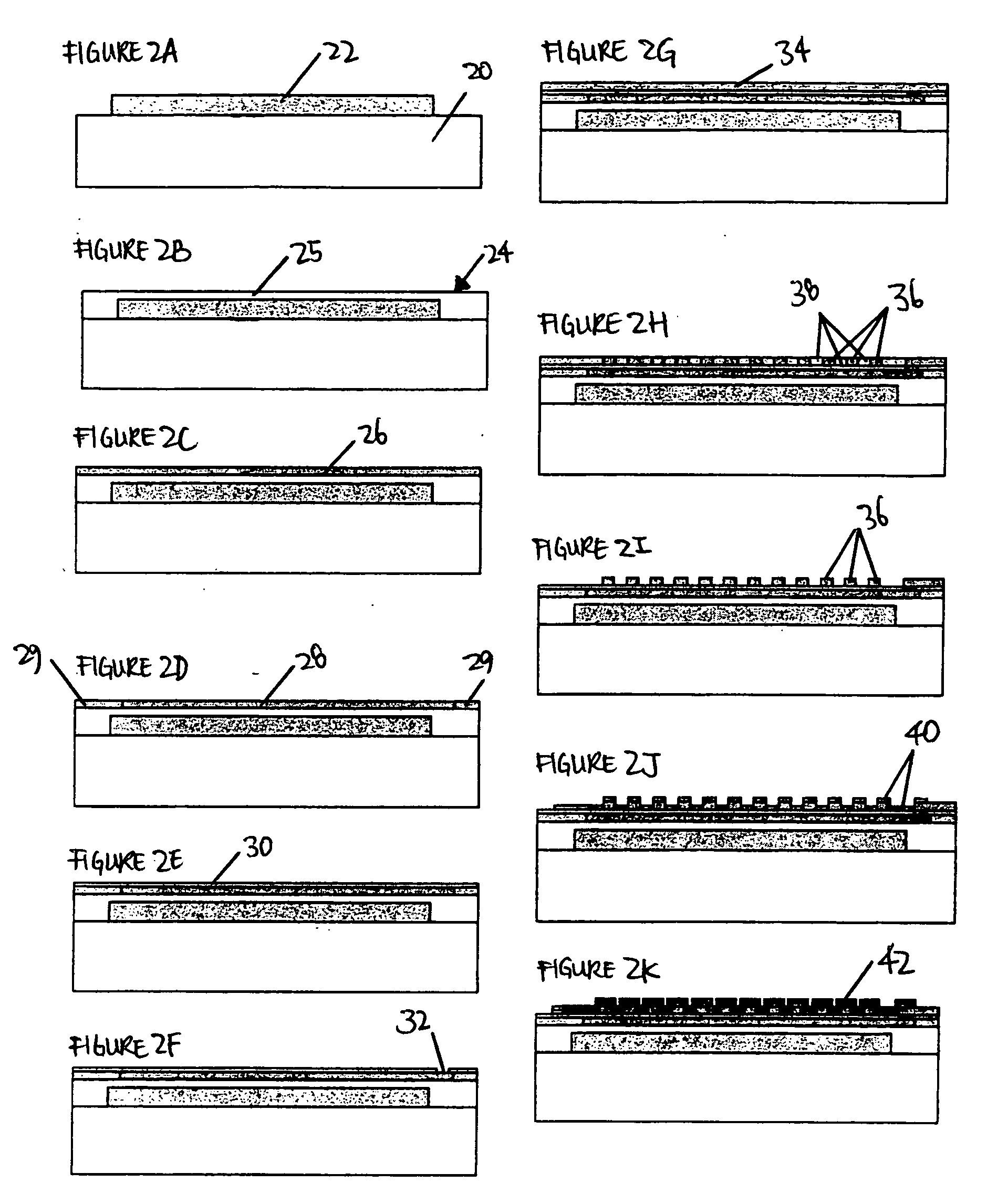Polymeric piezoresistive sensors
a piezoresistance sensor and polymer technology, applied in the field of piezoresitive sensors, can solve the problems of small piezoresistance coefficients in gold compared to those of silicon, reduced sensitivity, and very stiff silicon
- Summary
- Abstract
- Description
- Claims
- Application Information
AI Technical Summary
Benefits of technology
Problems solved by technology
Method used
Image
Examples
first embodiment
[0018] In a first embodiment, a sensor comprising a thin film transistor sensing element 10 and a resonator 12 is described. However, it should be noted that a scanning probe microscope (SPM) tip, such as atomic force microscopes (AFM) tip may also have a similar configuration. The micromechanical resonator 12 is in the form of a simple force sensing cantilever (i.e., a microcantilever having a thickness of 10 microns or less). The cantilever 12 preferably comprises a polymer cantilever, such as a parylene cantilever. Other organic polymer materials such as Su8 may also be used. Inorganic materials such as semiconductors (e.g. silicon (Si) and gallium arsenide (GaAs)) and insulators (e.g. silicon dioxide (SiO2) and silicon nitride (Si3N4)) may also be used as cantilever materials.
[0019] The thin film transistor10 preferably comprises an all organic thin film transistor which is located on a cantilever 12. The transistor 10 functions as the piezoresistive sensing element for the can...
PUM
 Login to View More
Login to View More Abstract
Description
Claims
Application Information
 Login to View More
Login to View More - R&D
- Intellectual Property
- Life Sciences
- Materials
- Tech Scout
- Unparalleled Data Quality
- Higher Quality Content
- 60% Fewer Hallucinations
Browse by: Latest US Patents, China's latest patents, Technical Efficacy Thesaurus, Application Domain, Technology Topic, Popular Technical Reports.
© 2025 PatSnap. All rights reserved.Legal|Privacy policy|Modern Slavery Act Transparency Statement|Sitemap|About US| Contact US: help@patsnap.com



